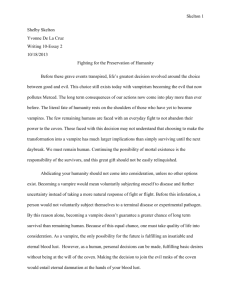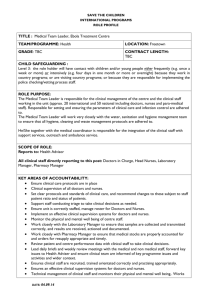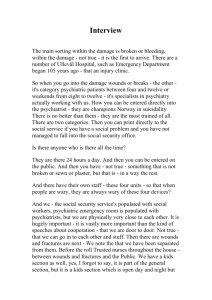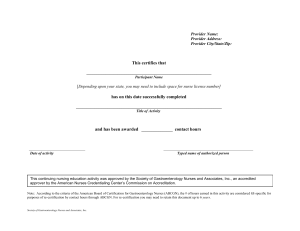DOWNLOAD and VIEW research summary and an in-depth
advertisement
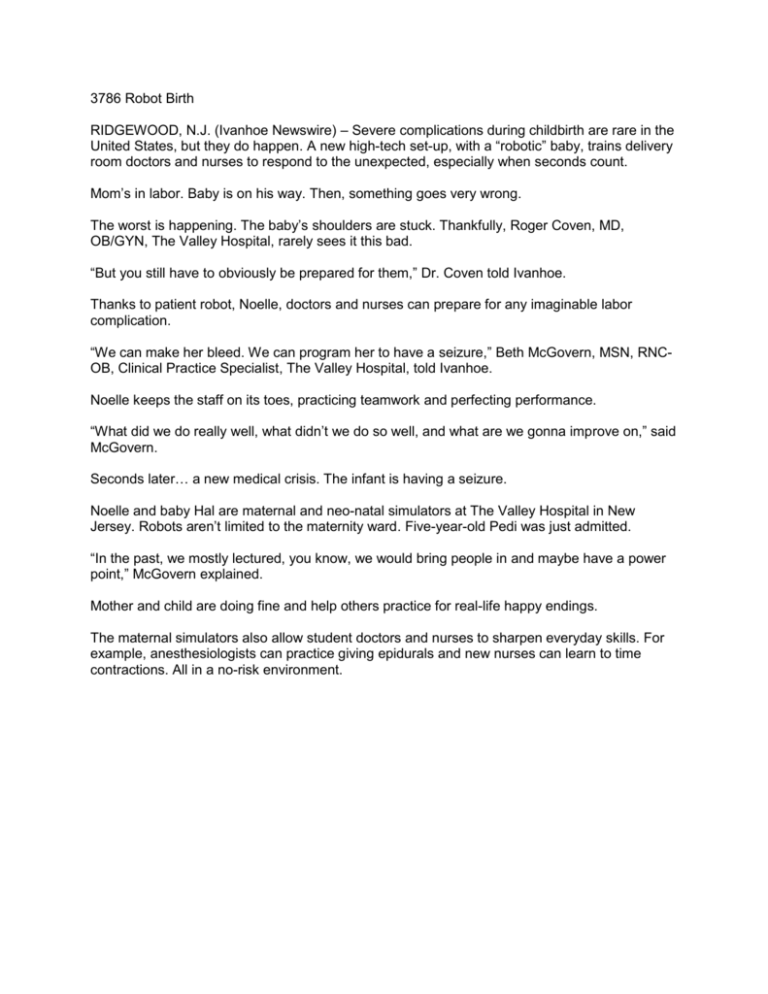
3786 Robot Birth RIDGEWOOD, N.J. (Ivanhoe Newswire) – Severe complications during childbirth are rare in the United States, but they do happen. A new high-tech set-up, with a “robotic” baby, trains delivery room doctors and nurses to respond to the unexpected, especially when seconds count. Mom’s in labor. Baby is on his way. Then, something goes very wrong. The worst is happening. The baby’s shoulders are stuck. Thankfully, Roger Coven, MD, OB/GYN, The Valley Hospital, rarely sees it this bad. “But you still have to obviously be prepared for them,” Dr. Coven told Ivanhoe. Thanks to patient robot, Noelle, doctors and nurses can prepare for any imaginable labor complication. “We can make her bleed. We can program her to have a seizure,” Beth McGovern, MSN, RNCOB, Clinical Practice Specialist, The Valley Hospital, told Ivanhoe. Noelle keeps the staff on its toes, practicing teamwork and perfecting performance. “What did we do really well, what didn’t we do so well, and what are we gonna improve on,” said McGovern. Seconds later… a new medical crisis. The infant is having a seizure. Noelle and baby Hal are maternal and neo-natal simulators at The Valley Hospital in New Jersey. Robots aren’t limited to the maternity ward. Five-year-old Pedi was just admitted. “In the past, we mostly lectured, you know, we would bring people in and maybe have a power point,” McGovern explained. Mother and child are doing fine and help others practice for real-life happy endings. The maternal simulators also allow student doctors and nurses to sharpen everyday skills. For example, anesthesiologists can practice giving epidurals and new nurses can learn to time contractions. All in a no-risk environment. MEDICAL BREAKTHROUGHS RESEARCH SUMMARY TOPIC: REPORT: Robot Birth MB #3786 BACKGROUND: During delivery, perinatal asphyxia is the main cause of morbidity and mortality in newborns. The risk is high in pre-term and term infants. Correct assistance during the first minutes of life is crucial. There are a few interventions that can be performed, like gentle airway cleaning, good ventilation and maintaining a good blood pressure. Permanent brain damages are related not only to the length and the severity of asphyxia but mainly to the cardiac activity and to the circulation. In infant mortality, the United States ranks 27th among industrialized nations. (Source: http://www.sciencedaily.com/releases/2014/02/140204074039.htm; http://www.ncbi.nlm.nih.gov/pubmed/11424616) SIGNS/SYMPTOMS: Fortunately, most newborns thrive, but for every 1,000 babies that are born, six die during their first year. Most of the babies die because they are born with a serious birth defect, born too small and too early or there are maternal complications. Some other causes are placenta, cord or membrane complications, respiratory distress, bacteria sepsis, neonatal hemorrhage, or circulatory system diseases. (Source: http://www.cdc.gov/features/dsinfantdeaths/index.html; http://www.cdc.gov/reproductivehealth/maternalinfanthealth/infantmortality.htm) NEW TECHNOLOGY: Robots are now being used to train doctors and nurses so they can respond quickly to newborn distress. The robot, Noelle, is a full-sized mannequin that can give birth and be used to simulate a variety of obstetrical, medical and surgical emergencies. There is also a baby mannequin, “Hal”, which is used in the training. Simulation training can be accomplished with no risk to the patient. According to The Valley Hospital, it also allows nurses, physicians and members of the health care team practice and reviews their performance. It is also valuable in high-risk, low frequency occurrences, which staff may not see often in their careers. (Source: http://www.valleyhealth.com/valley_newsdesc.aspx?newsid=1504) FOR MORE INFORMATION, PLEASE CONTACT: Beth McGovern, MSN, RNC-OB Clinical Practice Specialist The Valley Hospital bmcgove@valleyhealth.com “Robot Birth” Roger Coven, MD Roger Coven, MD, OB/GYN at The Valley Hospital talks about a new high-tech robot who helps train delivery room doctors and nurses What was going on in the delivery room? Dr. Coven: We simulated a situation where we’ve encountered a shoulder dystocia, which is one of the more feared complications of childbirth. The idea was to practice a complication that we encounter, but to practice it to where the situation requires more maneuvers than most of us have ever done before. So while I may have done the first maneuver many, many, many times I’ve never had to go to the second or the third maneuver. The idea is to get everyone mentally prepared to do that if they ever have to, but also to develop the teamwork that’s necessary to have a successful outcome. How was the teamwork? Dr. Coven: In this situation, it worked perfectly because everybody had a chance to think about it in advance and it was scripted. It was scripted but what was the feeling like? Did you still have the adrenaline rush that you would have in a real scenario? Dr. Coven: No, not even close. How is this helpful for you? Dr. Coven: You do not want to get into a situation that you’ve never been in and not had a chance to think about it and prepare for it. It's one thing to sit at your desk and think 'what would I do if that would ever happen?' But it’s another thing to be there and actually go through the maneuvers several times, see how the team with you reacts and prepare together for a situation that’s not very common. Is the main bottomline of the outcome patient safety ? Dr. Coven: That’s what this is all driven by. There’s been an incredible initiative in the last several years in medicine towards patient safety and this is just one component. How often is it that you’re able to practice together? Dr. Coven: This is new for us. We did do simulations about two years ago for a brief time. Now we’ve purchased Noel and we’re developing a more formal program. The first sessions are just coming up next month. In fact we’re having our first team meeting tomorrow to prepare for this. Is robotic simulations something you could see in the world of medicine's future? Dr. Coven: Definitely. It’s something that’s gaining traction. Is this also a way to refresh? Dr. Coven: It is. It's also a way to practice scenarios that just don’t occur very often. Still, we obviously need to be prepared for them.
